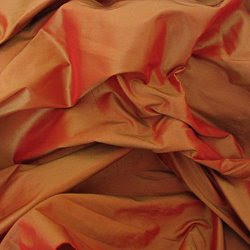Our end product was intended to be a basic, utilitarian chest with enough storage space to contain feast gear for two people. Using the benches from the Saucy Wench as his inspiration, Maghnus proceeded to cut out box kits for each student... And engineered the boxes to withstand at least 250lbs of force. Maghnus is a wise man. These boxes will see some heavy duty service as storage, seating, and oh-my-God-I-can't-reach-that standing upon.

Here is the basic kit we all started with. The four sides were pre-cut and marked for notching and drilling, and the bottom of the box was cut to an approximate size. We had to use the band saw to remove pieces from the edges of each side (so they would sit together smoothly) and the drill press for where we would countersink the screws. The initial plan for the boxes was to have them held together with dowels, but time constraints and mass production (six chests!) did not allow for that level of nit-picky. Instead, the boxes are glued and screwed together, with enough depth to use "plugs" for the proper look. It worked fabulously!


While all of the boxes started with the same basic layout, we ended up with a lot of personalization. Two of us decided to cut an arch into the "leg" side of our boxes, which will help them sit a little more stable in the long run. My arch was done on the band saw with much sweating, swearing, and patience.
Bob did his arch by holding the board end against the heavy duty belt sander until he made a nice, gentle curve.
Tuireadh decided she liked the look of her dowels poking out just a bit, so she will not be sanding them flush like the rest of us have.
Flidais' box accidentally obtained an extra row of drill holes, and rather than start over, she decided she liked the look of an extra row of dowels!
One box went home in it's most basic form to be assembled later, and the final box was set up as the step-by-step display.
The most hectic stage of the building process was the fitting of the bottom board. As we were novice woodworkers and in such a froth to have a nearly finished chest, our projects were a little less than square. Each base was measured to fit the individual quirks we created and then carefully set in place to be secured.

Here is my project after a day in the shop... All glued, screwed, doweled, sanded, and waiting for the wood putty that forgives all wonky-cutting sins.

Putty says: Go forth and sin no more!!!
...And a sneak glance at what the finished project will sort of be like, with my Super Pitcher of Awesomeness for scale.

Tom, of Blood and Sawdust (BloodandSawdust.com), states that while extant pieces of basic painted furniture are difficult to come by, they are repeatedly referred to in wills and inventories of the period. Though recipes do exist for various paints, I opted to use the most basic and easily obtained means of coloring your world available to the medieval woman...
I ordered milk paint off the internet.
 Just add water!
Just add water!
My color choices were a lovely selection of oxide and mineral based hues, and I chose a rich shade of pumpkin orange. Quelle suprise! Now, if you are looking for a durable, natural, non-toxic, bio-degradable, odor-free, user friendly, customizeable color... Then this is the one for you! Any 14th Century (or earlier) Joe Schmoe with milk, lime, and a little pigment could have made this paint and gotten his gaudy on to his little black heart's content.
The downside of milk paint? It does not deal well with being laid on thickly, as it will crack just a bit, and it dries completely flat in tone with subtle streaking. The folks at milkpaint.com state that this is the nature of milk paint, but it can be minimized by applying multiple layers of thinner paint. It will waterspot and pick up dirt if left unsealed. I chose to finish the interior of my chest with a clear, satin finish polyurethane, since I had a little bit left to get rid of. The outside is being treated with beeswax and burnishing.

The hinges have been sealed with a clear acrylic to slow down any rusting that may occur.


These are the nails for the hinges and are supposed to be hammered all the way through the wood, then cinched down on the inside. The nail ends will be covered up with a padded wool lining (can't have my feast gear getting chipped!) when the box is completely finished.
And now for another progress peek! The hinges are glued and nailed, and I'm just waiting for the next step.

These are the ring handles I've ordered...

I'm using newsprint here to pattern the interior of my box for a liner. The finished liner will have dividers for the dishes to stand within (using plastic canvas as the "core" within a flannel shell - washability is key here), sections for glasses/mugs, and perhaps a special spot for my Pitcher of Awesomeness.

My initial layout involved the dishes fitting across the width of the chest, rather than down the length. With the manner in which my super spiff handles are attached, this may not work quite right. Long spikes just happen to protrude quite a ways into the chest's interior, and since I don't want to cut them or knock them over (they will be so much easier to put on another box later if I don't mess with the spikes now)? Plan B must be... Well... Planned. I think I will make the spikes part of the structure that holds the lining and dividers in place.


.JPG)


.JPG)



.JPG)
.JPG)
.JPG)
.JPG)
.JPG)

.JPG)
.JPG)














.jpg)
.jpg)
